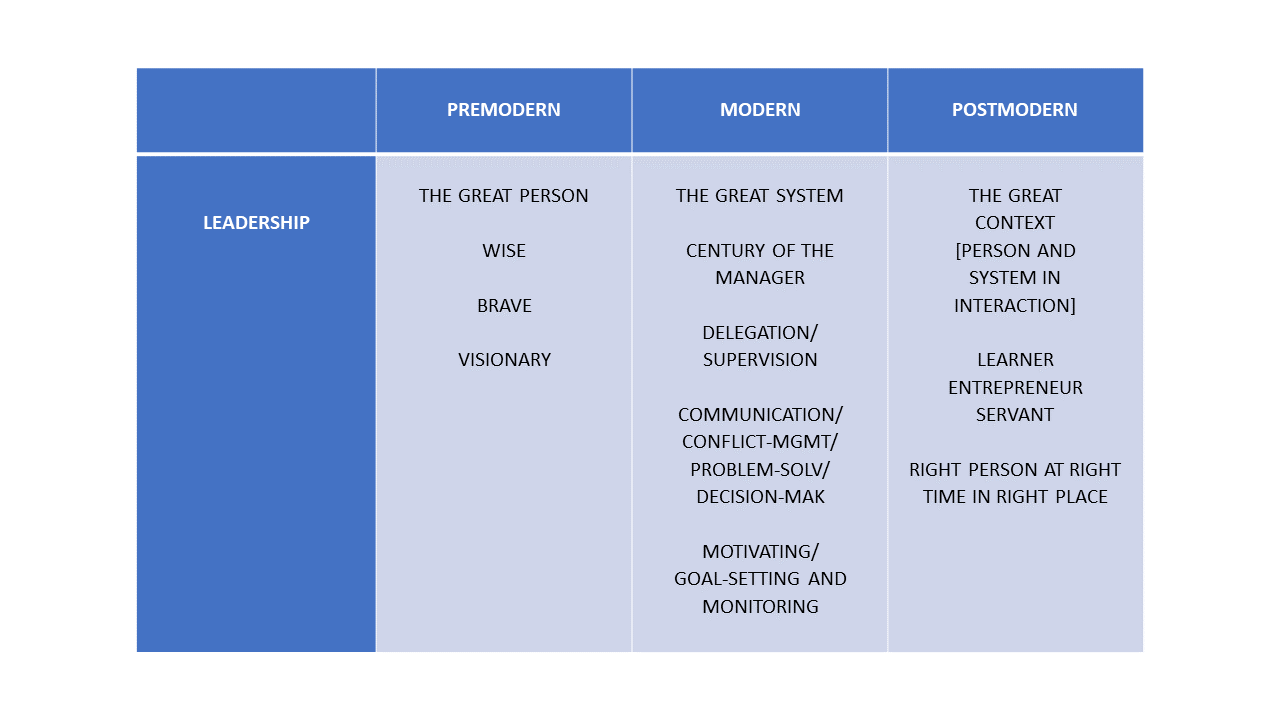
Leadership
Leaders in the premodern era tended to be great men and women who were selected for their character and education. Great men not only led organizations, they also influenced history and established societal values. Leaders were either born to greatness or provided with an elitist program of liberal arts and mentorship. They tended to exert authority through a paternalistic concern for the welfare and proper education of those who depended on them.
By contrast, the more democratic modern era tends to emphasize structures, processes and procedures that ensure the appropriate expression of leadership and influence. Events and structures—not great people—determine the course of modern history, and values are identified as products of the system and bureaucracy rather than as products of any specific individual(s). Emphasis was thus placed not on identifying or producing a great leader (as in the premodern society), but on constructing a great system. Those who head modern organizations typically define themselves as managers rather than leaders. They were to manage and be worthy stewards of the great system that had been created by other people (the nameless and faceless designers of bureaucracies). Modern authority is expressed through the autonomy of rules, regulations, roles and organizational structures.
The postmodern world has called both the premodern and modern notions of leadership into question. The postmodern leader is neither inherently great nor is she merely a product of a great system or bureaucracy. Greatness in a postmodern society involves interaction and great alignment between potentially great people and a potentially great system. The postmodern leader can be found at any level of an organization. Individual leadership can be effectively exerted and will be influential if applied at the right time, in the right place, in the right manner, and with regard to the right problem or goal.
This contextual model of leadership requires careful consideration of both individual and organizational character and style. It also requires a tolerance for ambiguity, recognition of the need for one to learn from his or her mistakes, and a clear sense of personal aspirations. It is ultimately spiritual rather than secular in nature.









